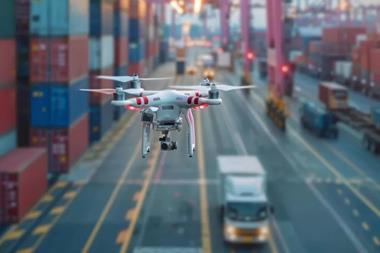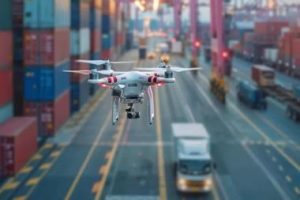25 June 2025
The International Association of Ports and Harbours (IAPH) has launched a comprehensive set of cybersecurity guidelines designed to help ports worldwide navigate the escalating cyber risks posed by emerging technologies. Officially unveiled at TOC Europe 2025 in Rotterdam, the guidelines address vulnerabilities linked to quantum computing, AI, drones, IoT, 5G, automation, and green energy, while providing actionable strategies for threat mitigation, workforce training, and regulatory compliance 127.
A Collaborative Effort to Fortify Global Port Cybersecurity
Developed by a 28-member expert group—including representatives from IAPH member ports, the World Bank, and the World Economic Forum—the guidelines emphasize “cybersecurity by design” to preemptively counter threats rather than react post-breach. Gadi Benmoshe, Vice Chair of IAPH’s Data Collaboration Committee, stressed:
“The maritime supply chain’s rapid adoption of emerging technologies makes proactive measures non-negotiable. Preparing now, not after an incident, is critical” 24.
The document builds on IAPH’s earlier 2021 cybersecurity guidelines (adopted by the IMO) and its 2023 innovation whitepaper, merging cyber resilience with cutting-edge tech integration 7.
Credit: IAHP
Key Focus Areas of the Guidelines
1. Holistic Risk Assessment for Emerging Technologies
The guidelines urge ports to evaluate risks even for technologies not yet deployed. For instance:
-
Quantum computing could render current encryption obsolete.
-
Green energy systems (e.g., smart grids) may introduce new attack vectors.
-
Drone hijacking poses physical sabotage risks 47.
2. Technology-Specific Mitigation Strategies
-
AI & Behavioral Analysis: Detect anomalies in network traffic.
-
5G Networks: Implement dedicated authentication protocols.
-
IoT Honeypots: Use decoy devices to gather threat intelligence 4.
3. Legislative and Training Imperatives
A dedicated chapter outlines the need for updated maritime cybersecurity laws and workforce education to embed cyber-awareness in port operations 210.
Why This Matters Now
The release coincides with IAPH’s World Ports Tracker 2025, which identified cybersecurity as the top safety concern for ports globally. With 60% of world container traffic handled by IAPH members, the guidelines aim to standardize best practices across the maritime supply chain 36.
Patrick Verhoeven, IAPH Managing Director, noted:
“These guidelines address urgent vulnerabilities while supporting the UN Sustainable Development Goals. We’re committed to industry-wide adoption” 10.
Ports face growing cyber threats from hackers, ransomware, and supply chain attacks. As critical hubs for global trade, they must secure:
-
Operational Technology (OT) – Cranes, cargo systems, and vessel traffic control
-
Digital Infrastructure – Port management software, IoT sensors, and 5G networks
-
Supply Chain Data – Cargo manifests, customs systems, and logistics platforms
Key Measures:
✔ Regular risk assessments & penetration testing
✔ Network segmentation (IT/OT separation)
✔ Employee cybersecurity training
✔ Incident response plans for cyberattacks
With rising automation and AI, ports must prioritize cyber resilience to prevent disruptions. Proactive defense is essential—waiting for an attack is too late.
–
Accessibility and Next Steps
Available in English and Spanish, the guidelines are downloadable via IAPH’s website. A Mercator Media webinar on 25 June will further explore AI and quantum computing’s impact on port cybersecurity 57.
About IAPH: Founded in 1955, IAPH represents 192 port authorities and 168 businesses across 80+ countries, overseeing one-third of global sea-borne trade 10.
For media inquiries or guideline access, visit: IAPH World Ports Sustainability Program.



You have mentioned very interesting details! ps nice website.